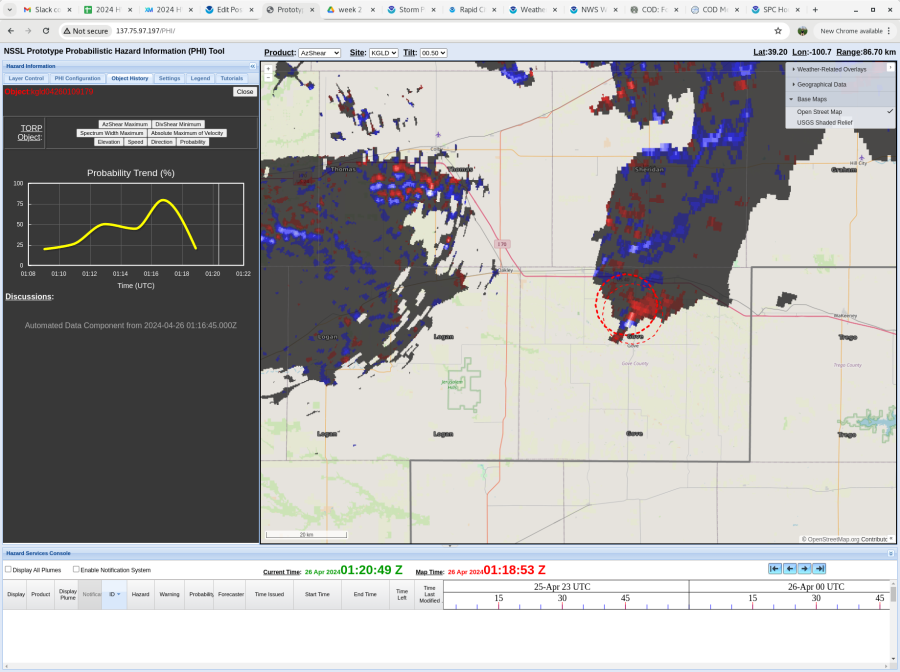
Observed a drastic change in TORP probabilities from one scan to the next. AzShear is quite blocky, which seems to be due to velocity sidelobing. -Sidney Crosby

Observed a drastic change in TORP probabilities from one scan to the next. AzShear is quite blocky, which seems to be due to velocity sidelobing. -Sidney Crosby
At 0005 UTC a weak velocity signature was evident on base velocity and DivShear showed a convergent signal.
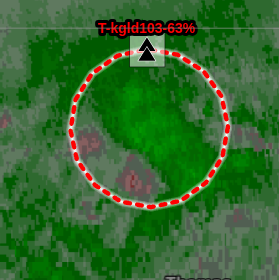
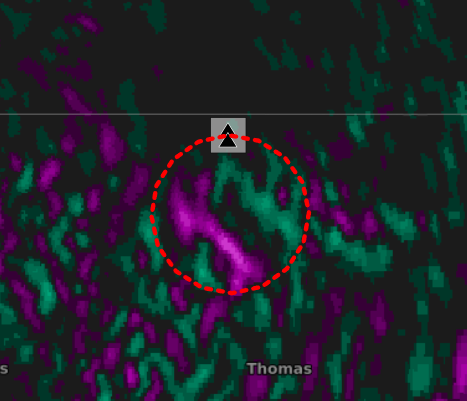
Two minutes later at 0007 UTC, the velocity looked a little better but remained weak while the DivShear began showing a much better signal while AzShear began showing a signal but not as strong as the DivShear.
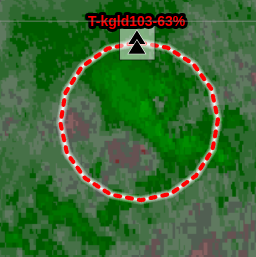
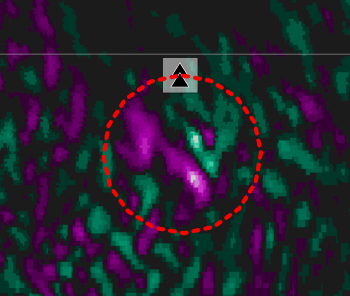
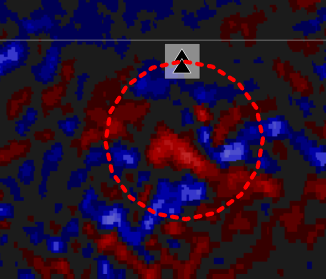
Another two minutes later at 0009 UTC, a weak velocity couplet developed while DivShear was beginning to develop that “cloverleaf” look and AzShear continued to increase.
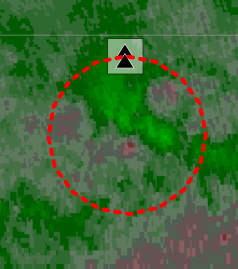
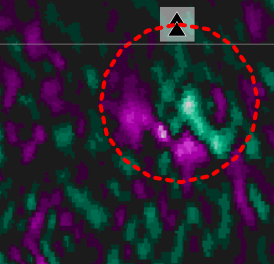
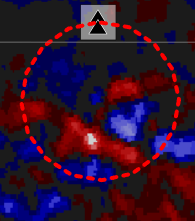
By 0011 UTC, a stronger velocity couplet was evident with near gate to gate values, and both DivShear and AzShear showed very nice signatures. These are all factors indicating the potential for tornadic development and the AzShear and to a greater degree DivShear (picking up on the development a bit earlier) did a good job in this example despite relatively weak velocity couplet.
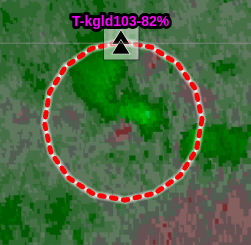
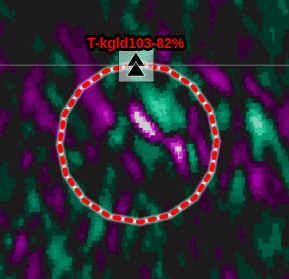
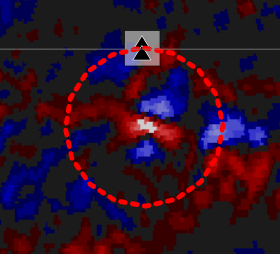
The Torp during this time frame also showed a significant increase from below 25% to up to 82% during this 5 min period.
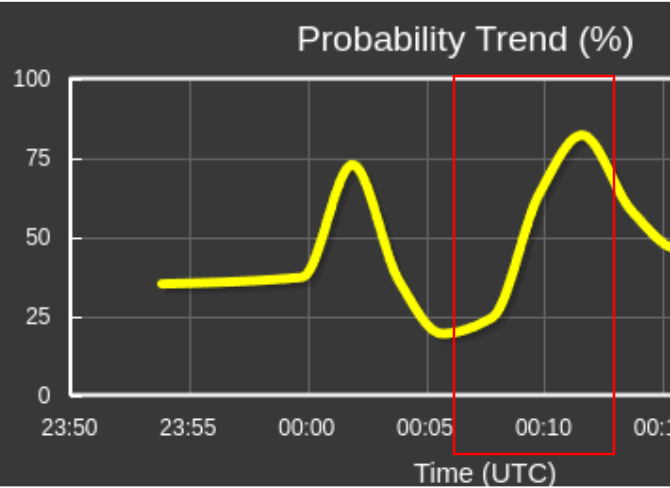
Given all of this information, one would feel pretty confident in going with a tornado warning with the DivShear and AzShear products adding confidence. However, looking at the environment, a backdoor cold front pushed southeastward through this area about an hour earlier and surface temps dropped into the 50s with northeast winds stabilized the near surface layer and prevented anything from happening with this storm, although there was a storm report mentioning an almost tornado touchdown in this area. So this brings the question about whether this was a Torp false alarm or not. It appeared to work as expected and likely would have been correct if the front hadn’t moved through. It does give confidence that these new products bring value to the warning forecaster and would be beneficial to operations.
Flash
Spotter reported that there was nearly a tornado (X report), in a cell near Colby, KS.
AzShear picked up on this area, and DivShear was highlighting on it a couple of brief scans before.
KGLD velocity also indicated two brief potential couplets (just left of center in image).
As warning operator, I would have issued a TOR around 00:17z.
UPDATE: Further analysis indicates this cell was just on the north side of the boundary.
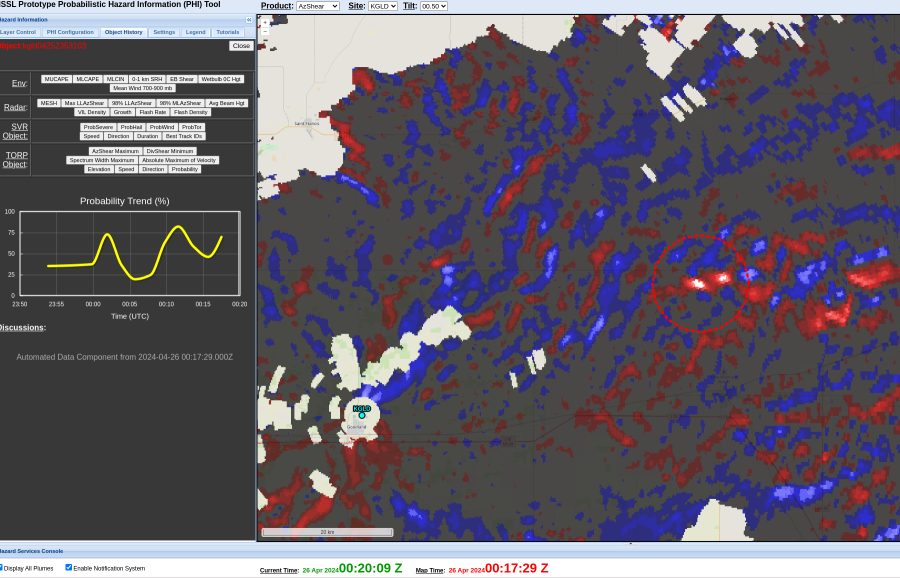
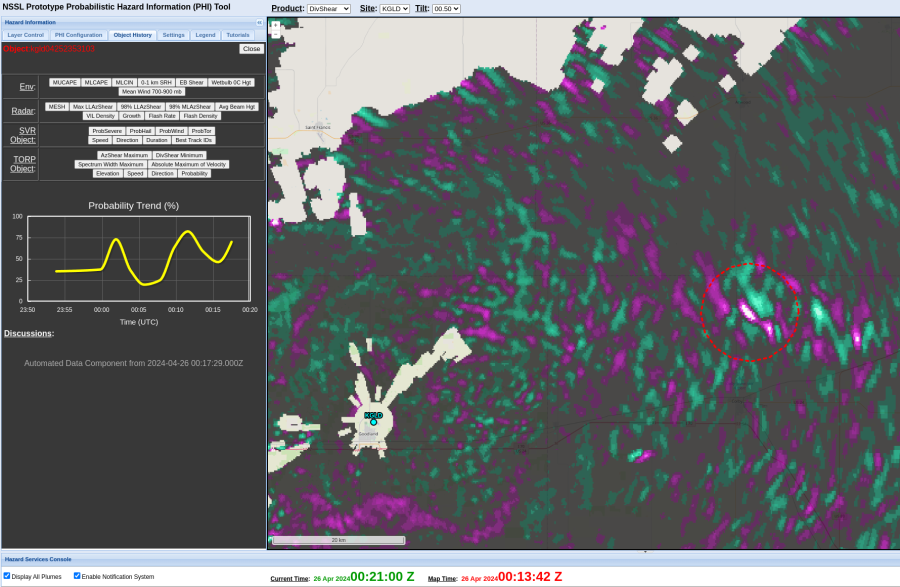
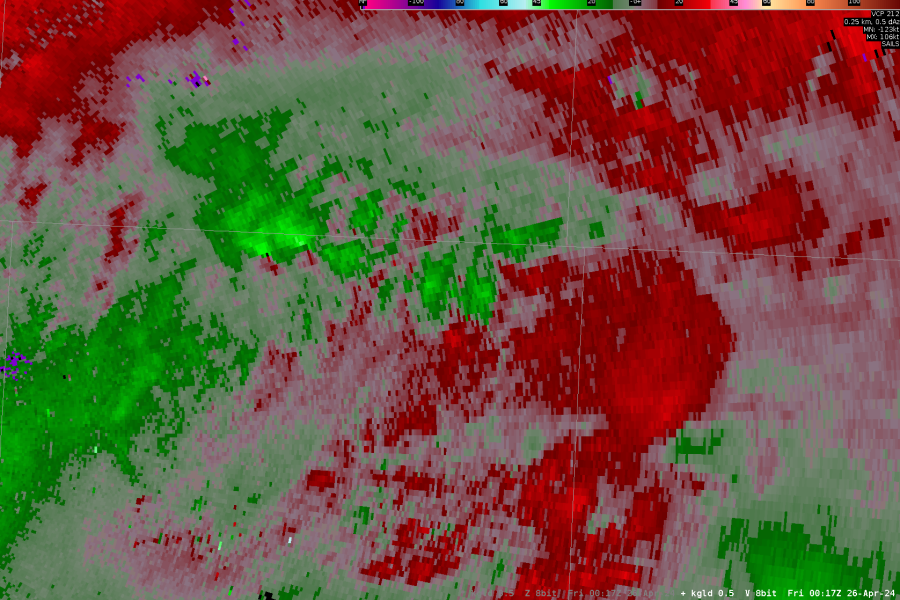

-Oppenheimer
A wind farm is located west of the GLD radar and is evident on the Reflectivity image. When checking on the “Display Aggressive Filtered Objects” there is a persistent Torp object identified over the wind farm, but turning this off removes this misidentified object which is good because it means the filter is doing what it is intended to do.
Flash


Messy velocity data along the leading edge of this MCS east of Rapid City, South Dakota led to blocky AzShear values and several unreliable TORP objects.
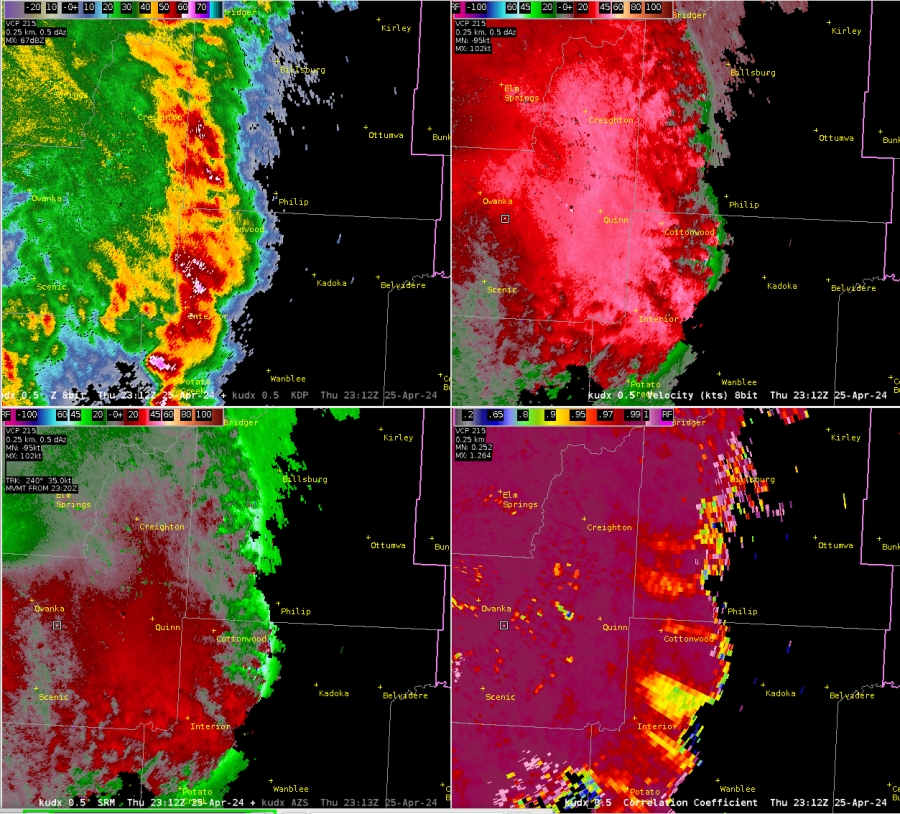
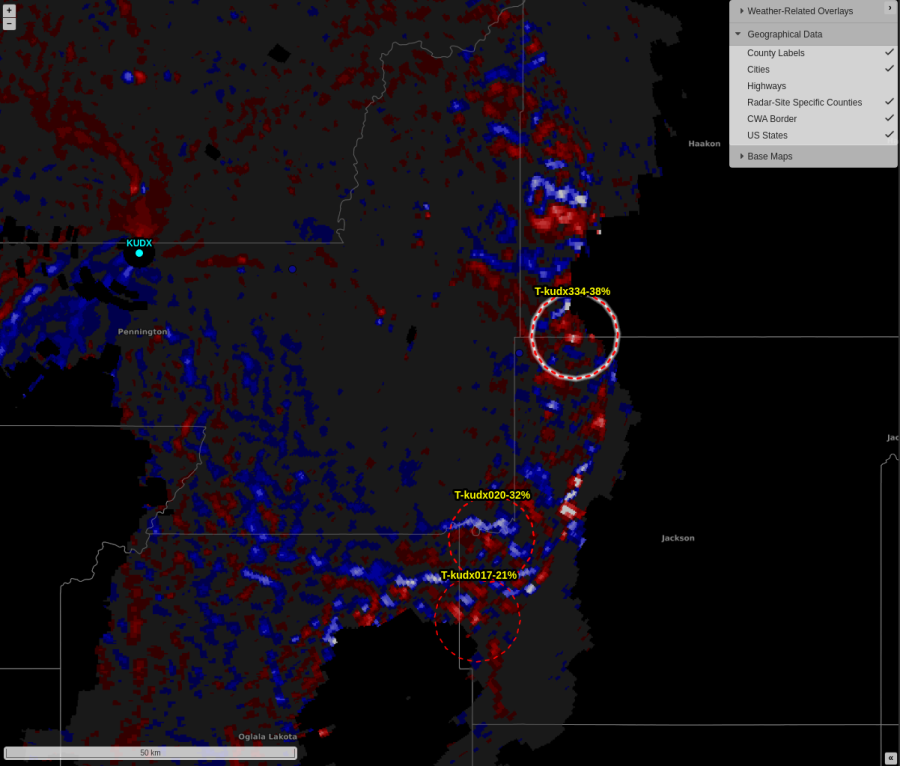
Kilometers
A storm northwest of Goodland had a Torp object identified on it around 29% at 2323 UTC but then the next volume scan jumped to over 50% at 2326 UTC as the storm began showing a more prominent hook and AzShear values increased as well. Again the trend charts are very useful for keeping track of storm intensity history.
Flash
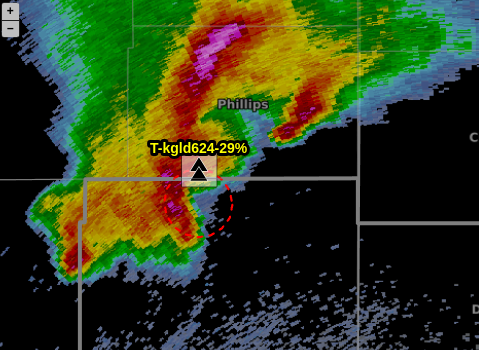
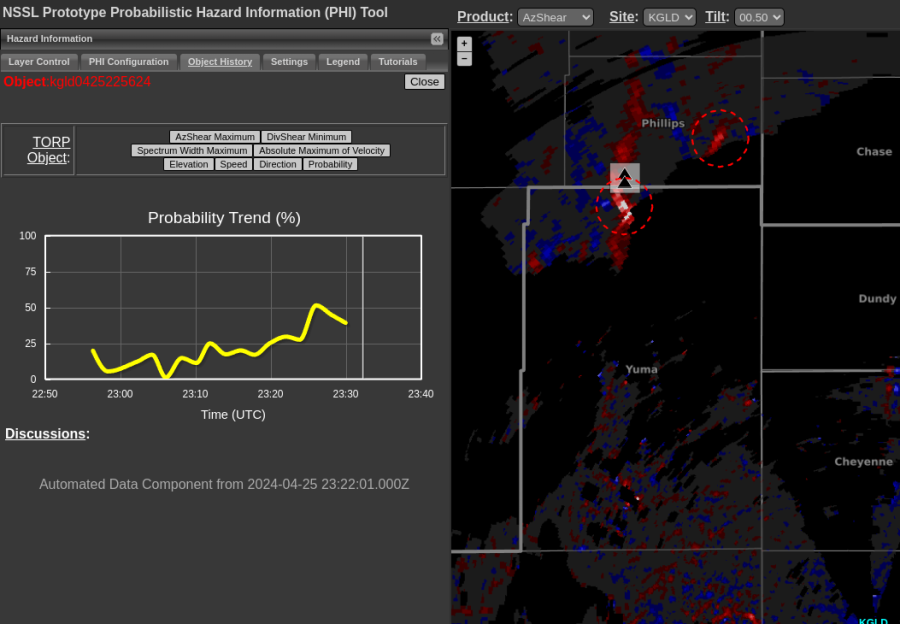
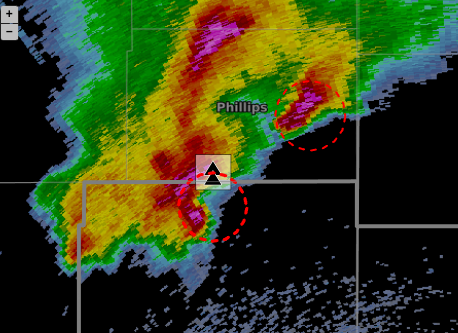
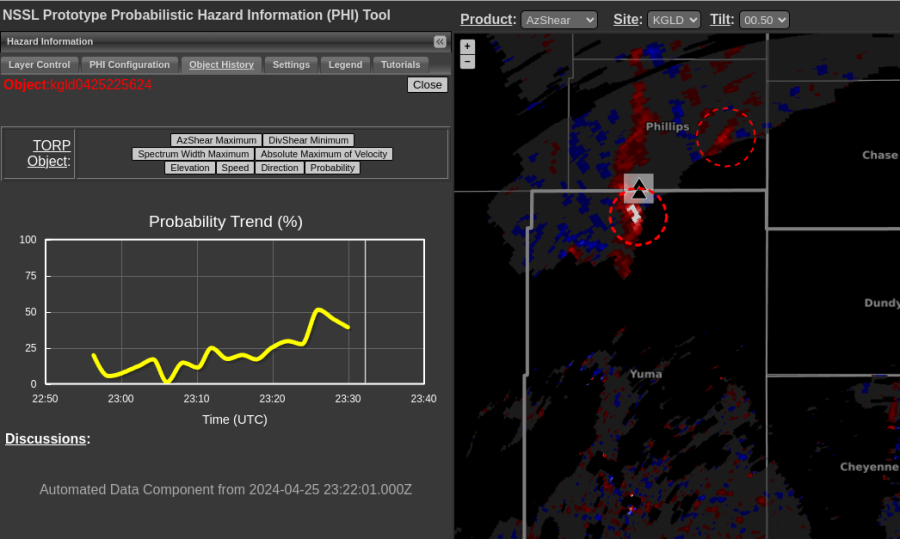
Surface boundary (NE of DDC) pretty evident in DivShear data. Less-so in AzShear.
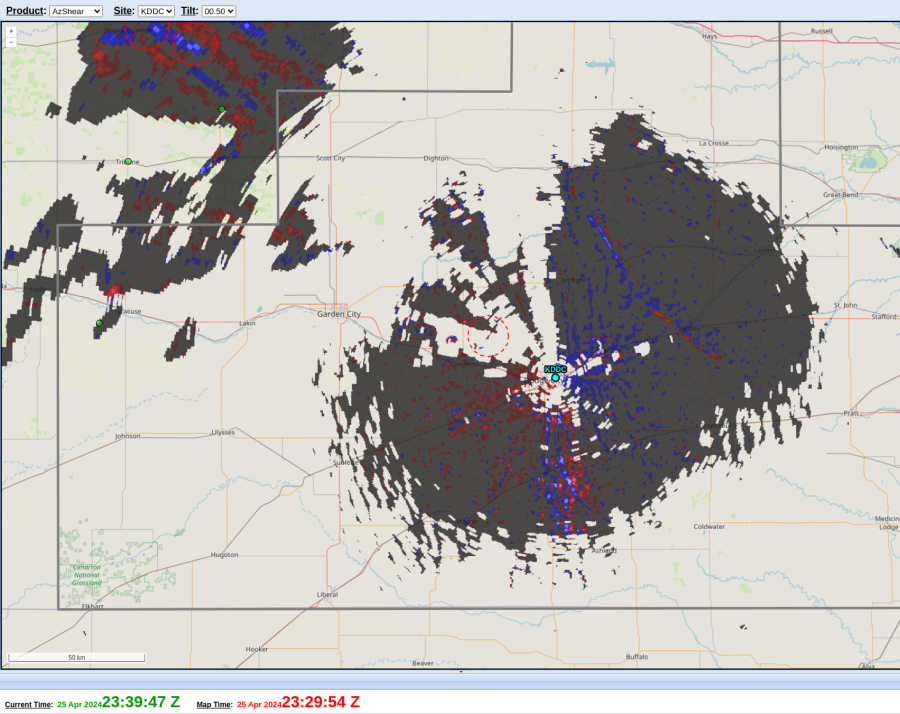
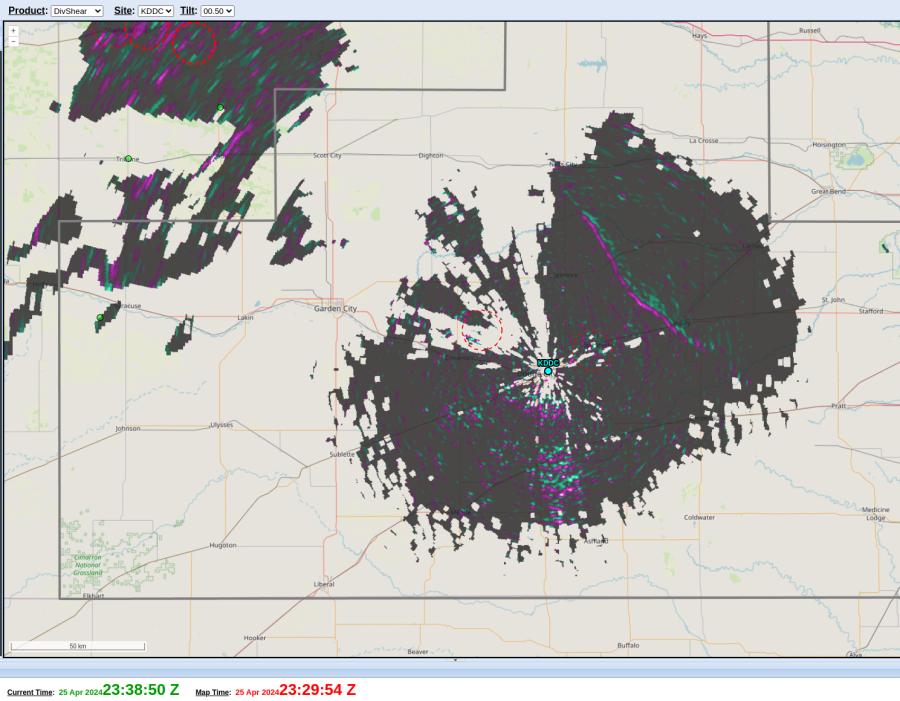

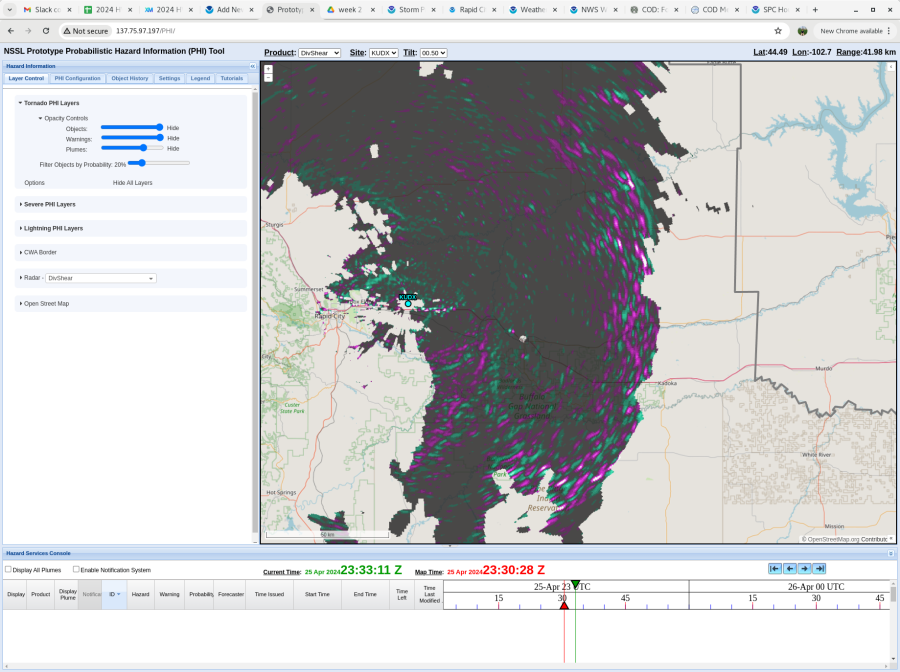
Noticed a band of high negative DivShear along the line of storms where several LSRs of 59mph, 60mph, and 63mph winds were reported. This signal decreased as the line pushed east, and we have received no LSRs since then. Base products corroborate this too, with generally decreasing velocities and a weakening reflectivity gradient. -Sidney Crosby
Despite some Cave issues at the start of our real-time case, looking at the Torp on the Phi Tool, there was a storm that had an object identified with a history and it was encouraging to see the values drop off significantly as the velocity data was weakening as well.
Flash
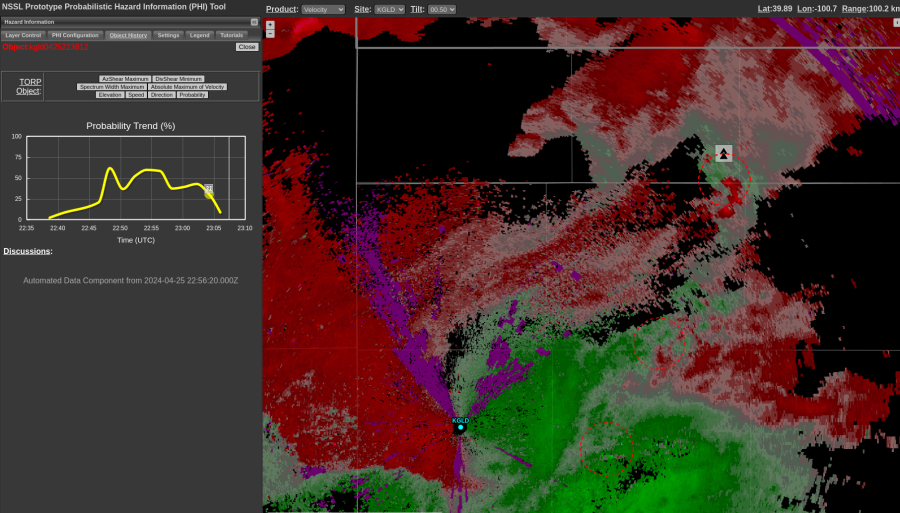
When examining a TORP case in the western US, there were many detections that occurred along the mountain ranges. However, when “aggressive auto filtering” was turned on, all of these “bad” detections were removed:
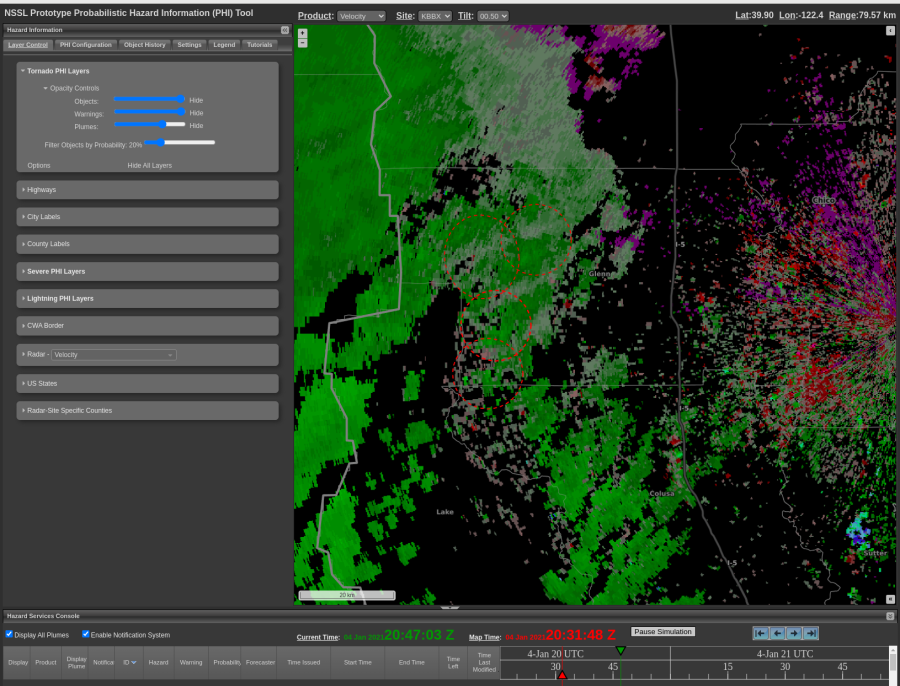

In AWIPS, one thing that I found useful, at least as someone unfamiliar with the area and its terrain, was loading the HiRes Topo map beneath the TORP detections. I had to increase the line width of the TORP objections, but they displayed well on top of the HiRes Topo map:
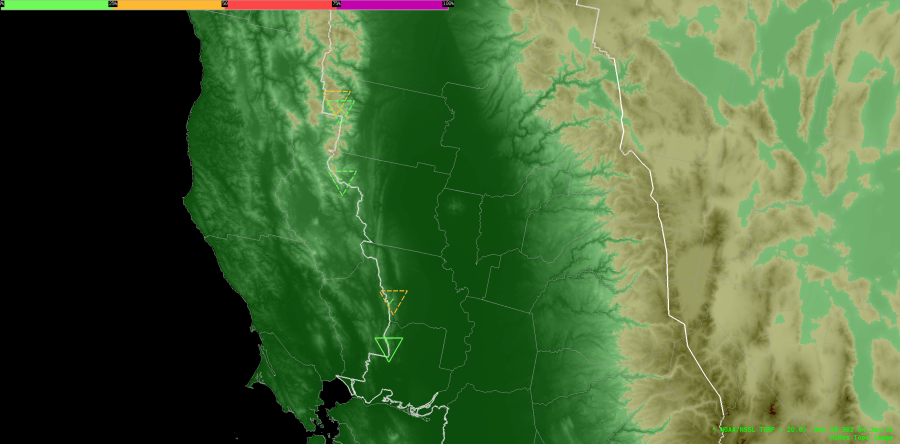
Here is a signature that caught my eye, a bit of an elongated area of increasing convergence/divergence along a line segment in the northern part of the CWA:

Here is an example of how an AWIPS display looked around the time of a possible tornado. Velocity shows only a weak couplet. TORP had a weak track, but the current probability at the time of the tornado was just 30%.
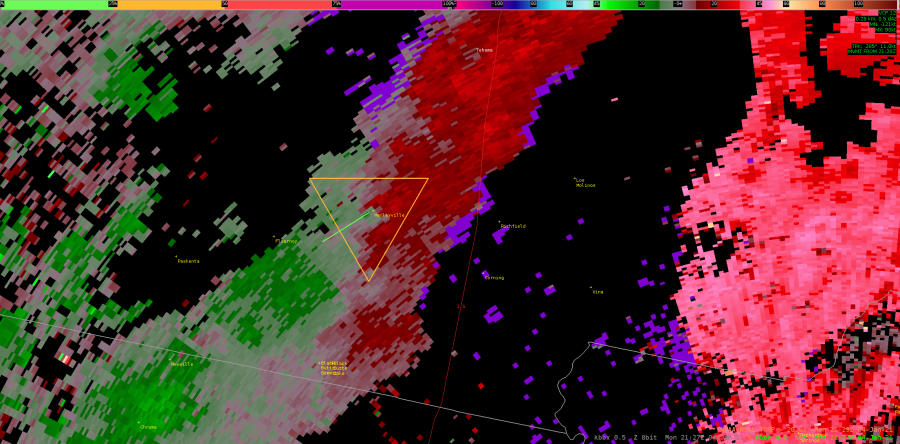
I did not have a warning out at the time of the possible tornado (pictured above). But later at 2140z I decided to hoist a warning despite no TORP objection showing up. The same storm was producing weak rotation in velocity further south, and AzShear had a decent signal in those same locations:
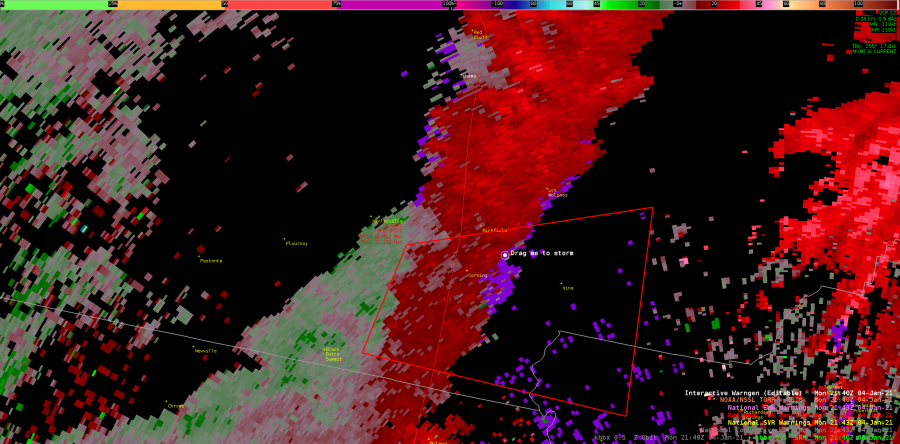
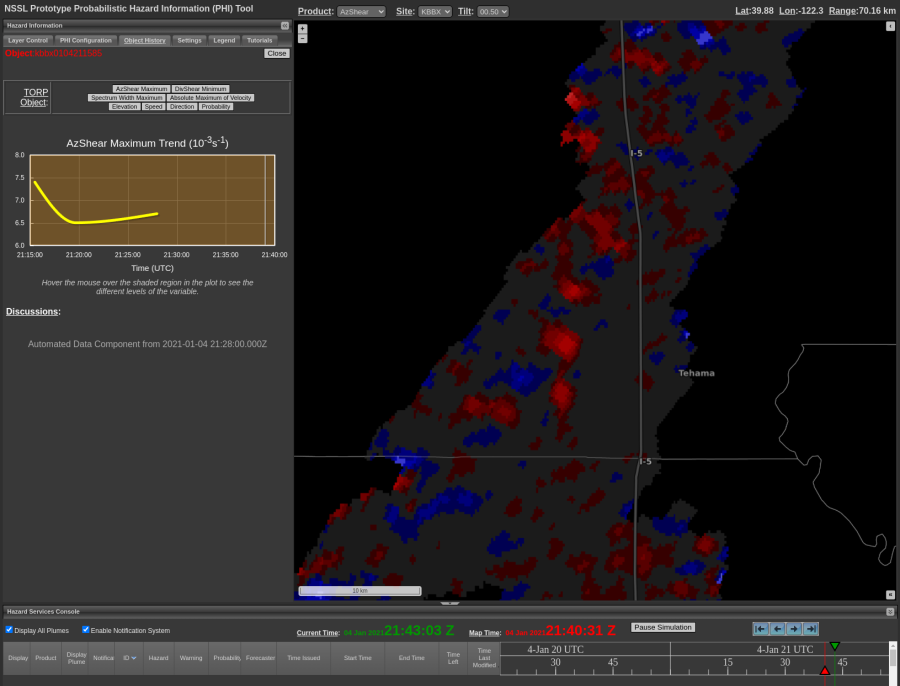
In a subsequent scan at 2144z (not pictured) the velocity and AzShear signatures appeared to increase slightly, but TORP still did not have a detection for this area (this even after turning off any QC filters and reducing the probability filter to 10%).
-Orange Lightning